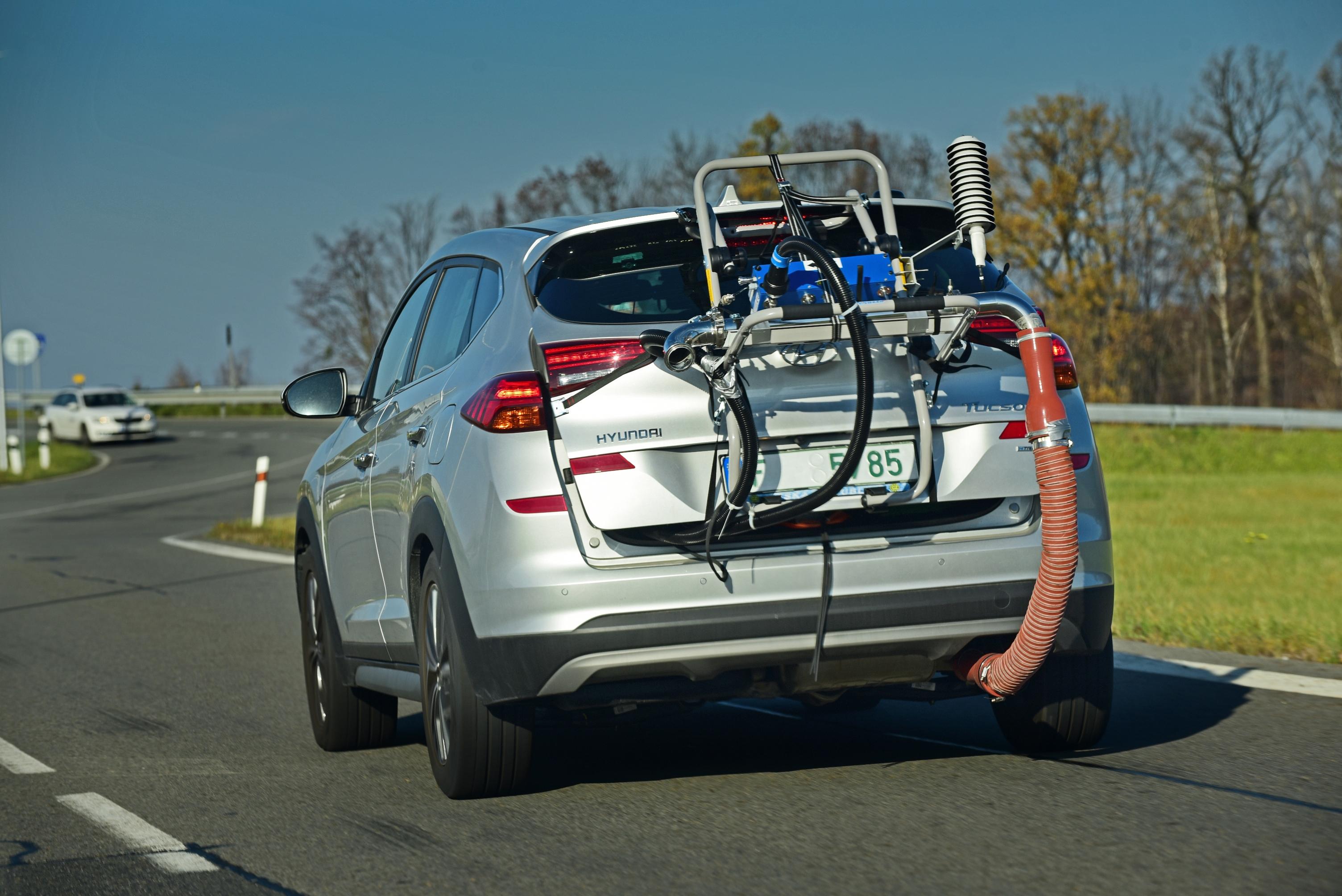Measurement of real emissions
at Hyundai’s car plant in
Nošovice
1 minute of reading | 30.11.2018

Increasing pressure to reduce emissions, in particular CO2, both from the European Commission and the European Parliament and from national governments and parliaments, has prompted car manufacturers to invest in test facilities and closely monitor so-called real emissions. Unlike many competitors, the Hyundai car plant in Nošovice has dealt with this issue in advance and is thus fully prepared to provide current and valid data when homologating individual models.
The Real Driving Emissions (RDE) test measures emissions in real vehicle traffic using an additional portable emission measurement device, known as the Portable Emissions Measurement System (PEMS). The device measures the content of key air pollutants in the exhaust while driving. It deals not only with CO2 emissions, but also CO, NOX and particulate matter.
The PEMS device itself, from the American company Sensors Inc., consists of several parts. The first is a calibrated pipe connected to the exhaust from which gas samples are taken. These samples are sent to the analyzer, which measures and evaluates the content of individual pollutants while driving. The system also includes a weather station to determine the exact temperature, humidity and air pressure and other weather conditions and a GPS station registering the exact location of the vehicle. The test is possible only under certain conditions (including elevation, altitude, and air temperature) and requires driving in the city, on motorways and on minor roads. The measurement does not start until after the warm-up phase of the engine, and starts when the coolant temperature is at least 60 ° C, that is after about 2 to 3 minutes of operation and warm-up of the engine.
During measurement, the PEMS device is partially mounted on a bicycle rack and partially stored inside the vehicle. The device is powered via an external 12 V car battery so that increased energy consumption from the car battery does not distort the measurement results.
The set program performs
measurement, analysis and error reporting separately. Measurement on one
vehicle takes about five days: assembly and disassembly of the device takes one
day, testing takes two days it takes two days to evaluate the results.
The purpose of measurements is not to replace laboratory tests, but to
supplement laboratory results with real measurements, particularly important
given the occurrence of the DieselGate affair. These measurements will become
mandatory for all car manufacturers in 2019 and Hyundai wants to be ready in
advance.















